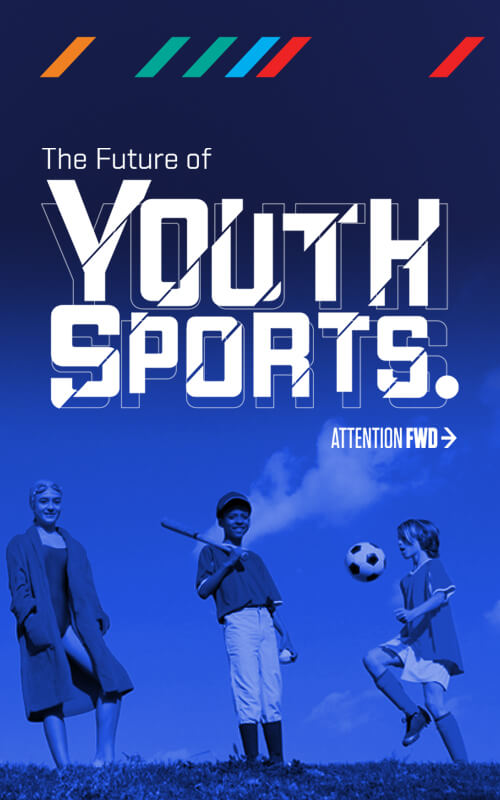-
![]()
Report: The Future of Youth Sports
Youth Sports Report Overview10 in-depth topics from recruiting to brain development to esports.
We take a deep look at the best and worst-case scenarios for the future of youth sports as parents, coaches, futurists, industry experts—and former youth athletes.
Bridging the Mind-Body Divide
Sales of VR software tripled in 2019 from $100 million to $300 million, far outstripping the gaming industry’s overall rate of growth. The top-selling VR game, Beat Saber, is credited with helping legions of players lose significant amounts of weight. The widely hyped Population: One, a Fortnite-like VR battle royale game, requires extensive upper-body movement for climbing, flying and, of course, reloading and shooting. The more immersive gameplay becomes, the more physically involved the user input will become. As VR and AR systems become more widely affordable and available, gaming may well become our primary path to fitness.
Gender Equality, Equal Access
Without the physical and economic restrictions of physical sports, esports became the most inclusive sports category in history. The long-contested discrepancy of disproportionate collegiate scholarships for male and female athletes was eliminated, as colleges incentivized female participation through scholarships and the split became roughly equal between genders. The absence of economic barriers such as equipment and travel costs allowed near-equal access for schools of all socioeconomic levels. Physically limited students were no longer without a social means to compete with their peers.
Lack of injuries played a prominent role in widespread adoption of gaming in youth education. Like their physical predecessors, physical regimens including posture stretches, regular joint icing and mandatory breaks were developed and spread to combat the potential side effects of gaming. The physical dexterity, mental acuteness and reflexes required to compete at a high level inspired a wave of specialized new workout trends that were encouraged by coaches and health professionals to begin at youth.
-
![]()
Want a Hard Copy?
Buy a CopyThe complete report on The Future of Youth Sports is available for purchase. Includes 10 topics and our thinking on how to create a better youth sports experience for all.



